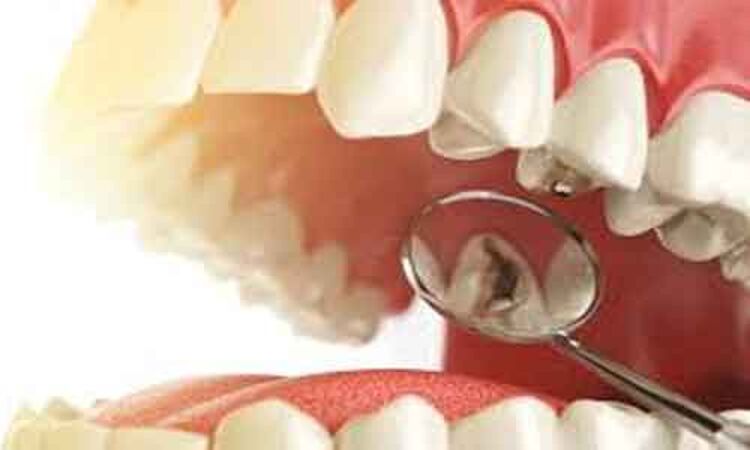- Home
- Medical news & Guidelines
- Anesthesiology
- Cardiology and CTVS
- Critical Care
- Dentistry
- Dermatology
- Diabetes and Endocrinology
- ENT
- Gastroenterology
- Medicine
- Nephrology
- Neurology
- Obstretics-Gynaecology
- Oncology
- Ophthalmology
- Orthopaedics
- Pediatrics-Neonatology
- Psychiatry
- Pulmonology
- Radiology
- Surgery
- Urology
- Laboratory Medicine
- Diet
- Nursing
- Paramedical
- Physiotherapy
- Health news
- Fact Check
- Bone Health Fact Check
- Brain Health Fact Check
- Cancer Related Fact Check
- Child Care Fact Check
- Dental and oral health fact check
- Diabetes and metabolic health fact check
- Diet and Nutrition Fact Check
- Eye and ENT Care Fact Check
- Fitness fact check
- Gut health fact check
- Heart health fact check
- Kidney health fact check
- Medical education fact check
- Men's health fact check
- Respiratory fact check
- Skin and hair care fact check
- Vaccine and Immunization fact check
- Women's health fact check
- AYUSH
- State News
- Andaman and Nicobar Islands
- Andhra Pradesh
- Arunachal Pradesh
- Assam
- Bihar
- Chandigarh
- Chattisgarh
- Dadra and Nagar Haveli
- Daman and Diu
- Delhi
- Goa
- Gujarat
- Haryana
- Himachal Pradesh
- Jammu & Kashmir
- Jharkhand
- Karnataka
- Kerala
- Ladakh
- Lakshadweep
- Madhya Pradesh
- Maharashtra
- Manipur
- Meghalaya
- Mizoram
- Nagaland
- Odisha
- Puducherry
- Punjab
- Rajasthan
- Sikkim
- Tamil Nadu
- Telangana
- Tripura
- Uttar Pradesh
- Uttrakhand
- West Bengal
- Medical Education
- Industry
Presence and prevalence of salivary gland ectasia and oral disease in COVID-19 survivors

Alexandria: The clinical picture of COVID-19 in various target organs has been extensively studied and described, but relatively little is known about the characteristics of oral cavity involvement. The study "Frequent and Persistent Salivary Gland Ectasia and Oral Disease After COVID-19" published in the Journal of Dental Research (JDR), investigated the presence and prevalence of oral manifestations in COVID-19 survivors.
Researchers at the Università Vita Salute San Raffaele, Milan, Italy, profiled the oral involvement in 122 COVID-19 survivors, hospitalized and followed up at a single referral visit after a median 104 days from hospital discharge. The researchers found that oral manifestations, specifically salivary gland ectasia, were unexpectedly common being detectable in 83.9% and 43% of COVID-19 survivors, respectively. Salivary glands were defined as being ectasic when they appeared swollen, with a patent duct, and no pus leaking.
Salivary gland ectasia reflected the hyperinflammatory response to SARS-CoV-2, as demonstrated by the significant relationship with C-reactive protein and lactate dehydrogenase (LDH) levels at hospital admission, and with the use of antibiotics during acute disease. Both LDH levels and antibiotic administration survived as independent predictors of salivary gland ectasia in a multivariable analysis. Temporomandibular joint abnormalities, facial pain and masticatory muscle weakness were also common.
"This retrospective and prospective cohort study of COVID-19 survivors revealed that residual damage of the oral cavity persists in the vast majority of the more severely affected patients far beyond clinical recovery," said JDR Editor-in-Chief Nicholas Jakubovics, Newcastle University, England. "This suggests that the oral cavity represents a preferential target for SARS-CoV-2 infection. Further studies are needed to clarify the connection between SARS-CoV-2 infection and oral disorders."
For Further References log on to the following link:
Dr Kamal Kant Kohli-MBBS, DTCD- a chest specialist with more than 30 years of practice and a flair for writing clinical articles, Dr Kamal Kant Kohli joined Medical Dialogues as a Chief Editor of Medical News. Besides writing articles, as an editor, he proofreads and verifies all the medical content published on Medical Dialogues including those coming from journals, studies,medical conferences,guidelines etc. Email: drkohli@medicaldialogues.in. Contact no. 011-43720751


